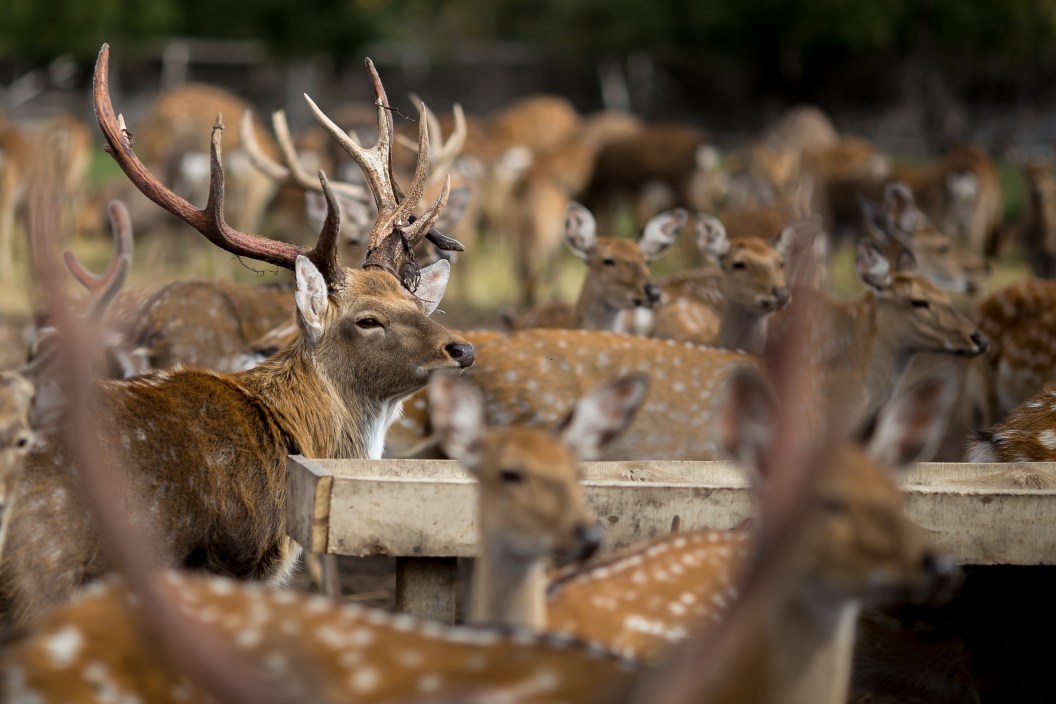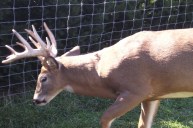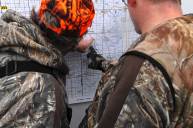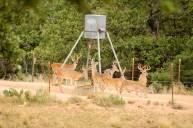As every hunter is well aware, Chronic Wasting Disease (CWD) has been sweeping through white-tailed deer and mule deer populations for the last few years. Now, cases of the neurodegenerative disorder are skyrocketing so badly in Texas deer breeding facilities that the state has enacted a new emergency rule to expand mandatory live CWD testing, according to a new report from Texas Parks and Wildlife.
CWD, a fatal disorder that affects some cervid species, is highly contagious and spreads quickly from animal to animal via direct contact with urine or feces, or indirectly through ticks. CWD attacks the nervous system and causes wild symptoms like loss of coordination, teeth grinding, abnormal head posture and/or drooping ears, listlessness, drooling, bizarre and erratic behavior, and drastic weight loss (hence the name 'wasting disease').
The unchecked spread of CWD could eventually mean trouble for hunters. Although CWD does not spread from meat to humans and therefore does not pose a health risk, the disease does threaten to slowly erode deer productivity and reduce a highly-infected areas ability to sustain hunter harvest.
Without other means of intervention, maintaining a deer population in areas riddled with CWD could eventually mean it'd be necessary to reduce or even halt hunter harvests.
Texas' new order aims to avoid this by minimizing the spread up front. It mandates a negative CWD test for any captive deer transfer in the state and prohibits the removal of any identification tags on the deer The rule applies to deer being transferred from any breeding facility, not only facilities where CWD has been confirmed.
The order, signed on July 24, goes one step further than a previously enacted order that required testing for specific breeding facilities that were known to either house CWD-infected deer or receive deer from CWD-positive facilities. This new order is in effect for 120 days. After the designated time period, TPWD can extend it if need be.
Chronic Wasting Disease in Texas and Other States
CWD has been steadily on the rise in Texas; there have been 504 confirmed cases of CWD in whitetails and mule deer, both free-range and captive, since 2012. Of those 504 positive tests, 300 of them, (that's 60%) have occurred in the last two years. Most of those cases came from deer in breeding facilities.
CWD isn't confined to Texas. The disease has been reported in several states all across the country and beyond. As of this year, CWD in free-ranging deer, elk and/or moose has been reported in at least 40 states in the continental United States, as well as five provinces in Canada.
Breeding facilities are widely blamed for the spread of CWD, but much of the spread in recent years has occurred in wild populations.
Wildlife advocates have called for increased funding on a national level to fuel CWD management efforts. A joint poll from the Theodore Roosevelt Conservation Partnership (TRCP) and National Deer Association (NDA) last year revealed that 88% of respondents favored a robust federal response to the disease.
Many of the CWD cases across the country have been attributed to breeding facilities. The emergency order in Texas came after the ninth facility in less than eight months produced a positive CWD test. This new law applies to breeder deer, as that's where the current problem in Texas seems to be stemming from.
"Since 2021, we have seen an increase in CWD detections from breeder deer at an unprecedented rate," John Silovsky, Wildlife Division Director for TPWD, said. "It's our hope that these emergency rules will strengthen our surveillance and reduce the number of CWD positive detections across the state."
READ MORE: 10 Common Whitetail Deer Diseases That Are Plaguing Herds Nationwide




